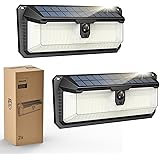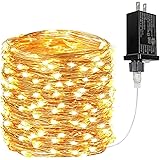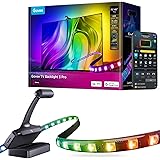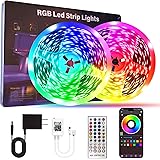The proliferation of smart home devices frequently introduces complexity into residential automation schemas. Managing diverse gadgets across multiple manufacturer applications can indeed prove cumbersome for the end-user. Fortunately, the strategic deployment of smart plugs, seamlessly integrated with Amazon Alexa, offers an elegant resolution to this pervasive challenge. This comprehensive guide details the precise methodologies for initial smart plug configuration and subsequent amalgamation within the Alexa ecosystem, thereby facilitating unified voice-activated control. Furthermore, advanced grouping functionalities within the Alexa application will be explored, enhancing the operational efficiency of your intelligent living space.
The Imperative of Smart Plug Integration within the IoT Ecosystem
Smart plugs serve as fundamental conduits within the expansive Internet of Things (IoT) framework, transforming conventional appliances into wirelessly controllable components. Their utility extends far beyond simple power toggling, encompassing scheduling capabilities and even rudimentary energy monitoring functions. Such devices significantly enhance convenience, allowing for remote management of lamps, fans, or seasonal decorations. Consequently, a robust integration strategy with a central voice assistant like Amazon Alexa becomes critically important. This approach ensures maximal leverage of the smart plug’s inherent capabilities.
Establishing Connectivity: The Role of the Manufacturer’s Application
Prior to integrating smart plugs with Alexa, the manufacturer’s proprietary application necessitates installation and configuration. This initial step is paramount, establishing the foundational Wi-Fi connection for each individual smart socket. Many reputable smart plug brands, for instance, utilize the versatile Smart Life application as their default control interface. Upon downloading, users are typically prompted to complete a straightforward registration process, often involving email verification for security protocols. This initial setup effectively registers the device with a cloud service, preparing it for subsequent automation tasks.
Navigating the Registration and Pairing Protocols
Successful registration within the chosen application mandates adherence to specific procedural steps. Users are frequently required to input personal details and validate their identity through a unique verification code dispatched to their registered email address. Subsequently, the physical smart plug itself must be prepared for network discovery. This process conventionally involves plugging the device into a power outlet and initiating its pairing mode. Often, this is achieved by depressing a physical button on the side for approximately six seconds, until a rapidly blinking blue indicator light is observed, signaling readiness for connection.
Architecting the Wi-Fi Connection for Optimal Performance
The establishment of a stable Wi-Fi connection constitutes the cornerstone of dependable smart plug operation. It is generally advised that these IoT devices are paired with the 2.4 GHz frequency band of your wireless network. This particular band, analogous to a wide, slower lane on a digital highway, offers superior range and wall penetration compared to its 5 GHz counterpart, thereby enhancing device reliability. Within the smart plug application, users will select the ‘Socket Wi-Fi’ option and provide their network credentials, including the Wi-Fi password. The application subsequently initiates a scan, detecting the actively blinking smart plug and commencing its cloud registration process.
Confirming Device Registration and Initial Application Control
Upon successful detection and registration, the smart plug’s status is updated within the manufacturer’s application. A visual confirmation of the newly added device will typically appear on the application’s home screen, signifying successful integration into your local network. At this juncture, users possess the capability to rename the device if desired, though this action can also be deferred until the Alexa integration phase. This preliminary control within the native app verifies the operational integrity of the smart plug before its functionalities are extended to the broader smart home ecosystem. Therefore, diligent verification is strongly recommended.
Bridging Ecosystems: Integrating Smart Plugs with Amazon Alexa
The true power of smart plugs is realized through their seamless integration with robust voice assistants such as Amazon Alexa. This interoperability transforms individual device control into an intuitive, hands-free experience. Within the smart plug’s dedicated application, an explicit ‘Alexa’ or ‘Third-Party Integration’ option is commonly presented. Upon selection, users are securely redirected to the Amazon Alexa application, where a prompt for account linking is displayed. Clicking the ‘Link’ button establishes a vital bridge between the two distinct software ecosystems, granting Alexa command over the newly configured smart plugs.
Synchronizing Devices and Verifying Alexa’s Control
Following the successful linking of accounts, a synchronization process is automatically initiated between the smart plug’s cloud service and the Alexa platform. This action populates the Alexa Devices list with the newly discovered smart plugs, making them available for voice commands and routine configurations. Users may need to manually refresh the ‘Devices’ section within the Alexa app to observe these additions instantaneously. Once listed, a simple voice command, such as ‘Alexa, turn on the [device name],’ should confirm the successful establishment of voice control. This verification step is critical for ensuring full operational capacity for smart plug setup and pairing with Alexa.
Orchestrating Automation: Grouping Smart Plugs for Enhanced Control
One of the most compelling features offered by the Alexa platform is the ability to consolidate multiple smart devices into cohesive groups. This functionality streamlines command execution, allowing a single voice prompt to manage an entire collection of devices concurrently. For example, instead of activating individual smart plugs for various festive decorations, a singular group named ‘Christmas Lights’ can be created. This organizational strategy is highly beneficial for optimizing home automation scenarios. Such grouping transforms a disparate collection of smart sockets into a harmonized system, akin to an orchestra responding to a conductor’s single baton movement.
Executing Group Commands and Extending Automation Possibilities
To create a group, users must access the ‘Devices’ section within the Alexa application and tap the ‘+’ icon located in the upper right-hand corner. The option ‘Add Group’ should then be selected, followed by inputting a unique, descriptive name, such as ‘Morning Routine’ or ‘Entertainment Center.’ Subsequently, all relevant smart plugs and other compatible devices are designated for inclusion within this newly defined group. Upon saving, a unified command like ‘Alexa, turn on the [group name]’ will simultaneously activate all associated devices. This advanced capability significantly broadens the scope of personalized home automation, extending beyond simple on/off functions to encompass complex, multi-device sequences.
Maximizing Utility: Best Practices for Smart Plug Management
Ensuring the longevity and efficiency of your smart plug ecosystem involves adhering to several best practices. Regularly checking for firmware updates within the smart plug’s native application is advisable, as these often contain security enhancements and performance improvements. Furthermore, strategically naming your devices and groups with clear, easily pronounceable titles prevents command ambiguity during voice interactions. This precision is analogous to providing a well-trained assistant with unambiguous instructions.
Consider the security implications of IoT devices; it is prudent to utilize strong, unique passwords for both your Wi-Fi network and smart home accounts. Moreover, understanding your Wi-Fi network’s capacity and potential signal dead zones facilitates optimal device placement, ensuring consistent connectivity for all smart plugs. A well-managed smart plug network elevates the overall smart home experience, transforming a residence into a truly intelligent environment. Therefore, proactive maintenance is highly recommended for sustained operational excellence in smart plug setup and pairing with Alexa.











